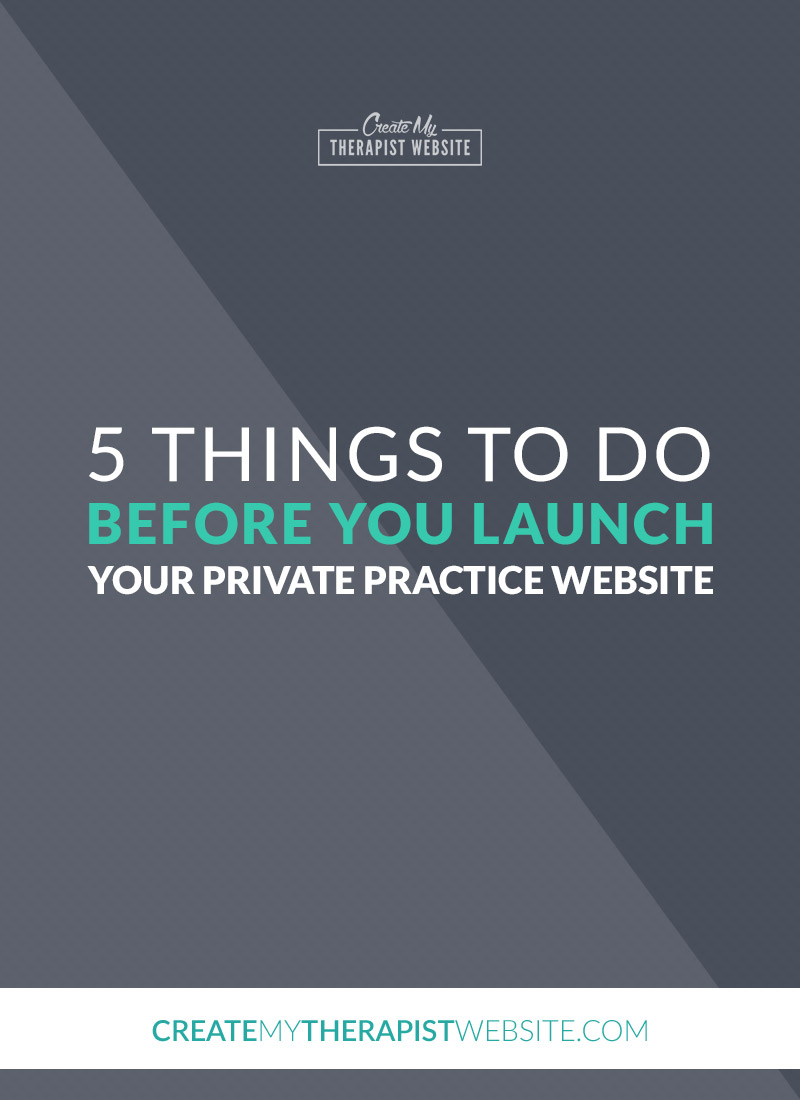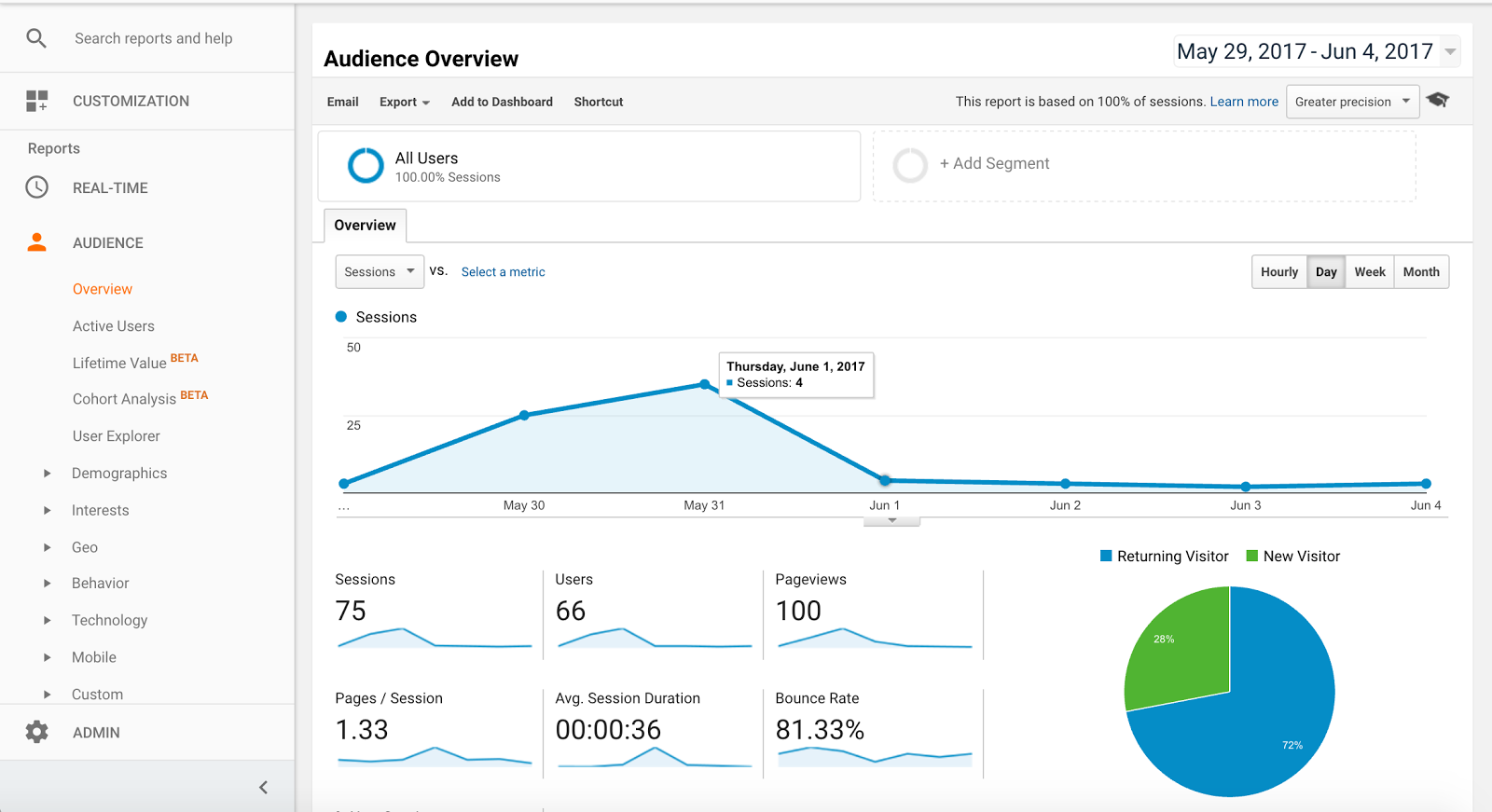You’ve worked for months on your private practice website, getting all the content in place, creating pages and making sure you’ve said all you need to say to attract that ideal client of yours. But how can you be certain you’re really ready to start sending traffic to your new online home?
In this article I’ll give you a website pre-launch checklist so that you can be sure you’ve got all the essentials in place prior to opening your therapy website up for business.
With websites, done is better than perfect
Is your website ever truly finished?
Of course not.
It’s one of the reasons why I love creating and managing websites… they are living, fluid marketing assets that will change with you and your private practice.
It’s important to remember to have the essential elements in place in order to start attracting your ideal clients, especially when launching a new website.
Over time though, you’ll likely want to make updates, add new content and refine your copy… and that’s ok.
I’d rather see you start getting traffic than agonizing over perfect copy and missing out on potential clients.
This PSA was brought to you by Daniel Fava.
5 Things To Do Before You Launch Your Private Practice Website
Below are the 5 most important tasks you’ll want to take care of before officially going live with your website and sending traffic your way.
Depending on the website platform you’re using, there may be more subtasks under each of these points.
Let’s get started.
1: Make sure your core page content is in place
If people are going to be visiting your new website, it makes sense to have the proper information there to help you convert those visitors into clients.
And just one homepage with a list of all your services and modalities isn’t going to cut it.
There are a few pages that I see as core to a private practice website and before you open the gates to clients and search engines, you’ll want these pages in place:
Homepage:
Pretty obvious. You can’t have a website without a homepage.
Treat your homepage as an introduction to your client. Give them a couple doors they can walk through to find the information they need to trust you and reach out.
A Single Page for Each Service You Offer:
This is your chance to get very specific about how you work with clients to help them overcome their challenges. Having a web page dedicated to each of your services is also great for SEO.
An About Page That’s Not About You
Your About Page is really about your client, not you. Speak directly to your ideal client, connect with how they’re feeling in the midst of their challenge and explain how your practice can help.
For some inspiration on your about page, check out these articles:
- 5 Resources To Create The Best Psychotherapy About Page Ever
- Websites For Therapists: 10 Examples Of Amazing About Pages
Contact Page
You’ll definitely want a dedicated page where potential clients can find all the information to get in touch with you. Make the link to this page easy to find, usually the last item in your main navigation.
There may be other pages that are specific to your practice and what you feel you need potential clients to know.
You may have pages like FAQ, Your First Visit or a page where clients can download intake forms.
The key is to know what information is essential to attracting new clients, helping them get to know and trust you and giving them the opportunity to contact you when they’re ready.
If those pages are in place, launch away.
You can, and should, add more content and pages later.
2: Proofread all your content
Nothing will may make you look unprofessional like a bunch of typos.
You’ll want to spend time with each page you’ve created, making sure to proofread each one carefully.
If you can, send your website to a friend or family member and ask them to help you out.
This will ensure no typo is missed and when you’re ready to go live you can be confident that their will be no mistakes in your copy.
3: Perform on-page SEO (search engine optimization) on your pages
Just putting content on a page is not always enough to make sure that search engines will find your content.
You’ll want to spend some time making sure you’ve got the proper keywords in the right places to let Google know what your pages are about.
This is especially important for your specific service pages as well as blog posts.
That content can more easily be focused around specific keywords, i.e. “couples counseling in Atlanta,” than your homepage because that page is more general and not focused on a specific service.
If you’re using WordPress, I recommend using the Yoast SEO plugin to help you know exactly where your keywords should go and what you can do to improve your pages and posts.
And if you want to learn more about on-page SEO and how to use it on your private practice website, check out this post:
On-Page Seo: How To Optimize Your Therapy Website Content For Search Engines
Now, just having some keywords in place on a few pages may not be enough to see much traffic from search engines right away. That definitely takes time.
The more content you add, while keeping SEO best practices in mind, the more your traffic from Google will increase over time.
Be patient and be consistent!
4: Test all links, contact forms, online scheduling, etc.
Treat this part of your website quality assurance as a treasure hunt!
You want to make sure every single link on your website works and sends the visitor to the right place.
Grab a cup of coffee (or glass of wine… I’m cool with that) and dig through each page of your website, clicking on every link.
Fill out your contact forms and make sure that the information gets sent to the right place.
If you’re using an online scheduling application, make sure you’re able to schedule appointments and see them showing up in your systems and on your calendar.
If visitors can’t simply use their website to find the information they need, they’ll just bounce.
5: Set up Google Analytics so you can monitor your traffic
Understanding your audience and where your website traffic is coming from is critical to the success of your website marketing.
You can’t grow what you don’t measure.
And the way we measure the health of our website and how it’s working to market your private practice is with Google Analytics.
Using Google Analytics can give you a clear picture of who is visiting, where they’re coming from, how long they’re on your site, and so much more.
I mean, who doesn’t like pretty graphs, right?
Here are just a few helpful reports you’ll get in Google Analytics:
- Audience Overview (bird’s eye view of what your audience is doing)
- Audience Demographics (characteristics of your audience including age, interests, gender, etc)
- Acquisition Overview (where your audience is coming from)
- Acquisition Social (what social media platforms your audience is coming from)
- Behavior Overview (what your audience is doing while on your site).
For more detailed instructions on how to get started using Google Analytics, check out this article here.
Conclusion
Have you been working on your own private practice website, getting it ready for the world?
I hope this post helps you make sure you’ve got some of the most important pieces in place.
As I said at the beginning of this article… your website is forever changing. So, remember that you can always add more content and make updates later.
The key is to have the essential pieces in place so you can start attracting traffic and getting more clients.
Struggling to get your website to the finish line?
Enroll in one of our courses to help you DIY your website and get more traffic.




